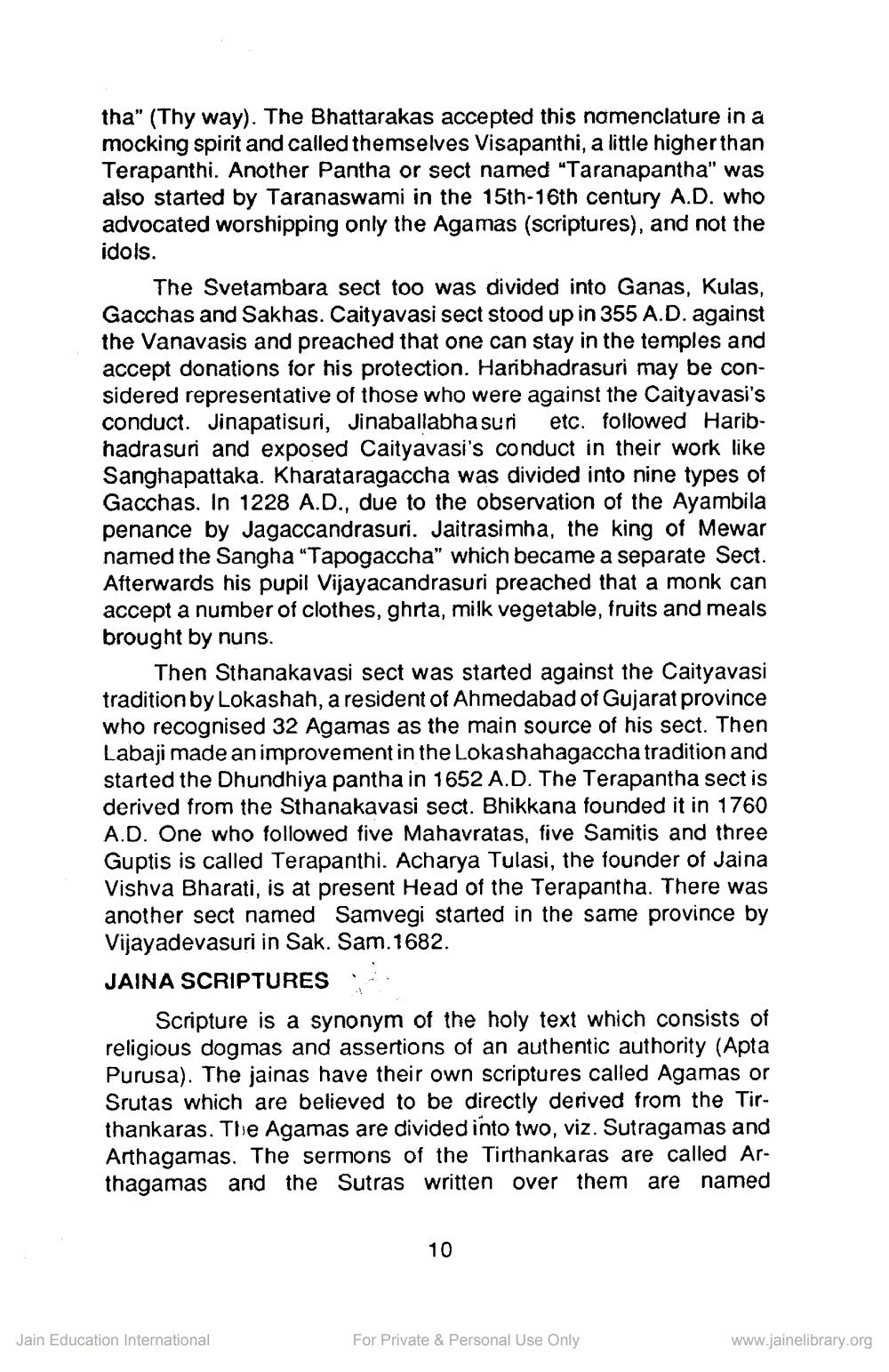________________
tha" (Thy way). The Bhattarakas accepted this nomenclature in a mocking spirit and called themselves Visapanthi, a little higher than Terapanthi. Another Pantha or sect named "Taranapantha" was also started by Taranaswami in the 15th-16th century A.D. who advocated worshipping only the Agamas (scriptures), and not the idols.
The Svetambara sect too was divided into Ganas, Kulas, Gacchas and Sakhas. Caityavasi sect stood up in 355 A.D. against the Vanavasis and preached that one can stay in the temples and accept donations for his protection. Haribhadrasuri may be considered representative of those who were against the Caityavasi's conduct. Jinapatisuri, Jinaballabha suri etc. followed Haribhadrasuri and exposed Caityavasi's conduct in their work like Sanghapattaka. Kharataragaccha was divided into nine types of Gacchas. In 1228 A.D., due to the observation of the Ayambila penance by Jagaccandrasuri. Jaitrasimha, the king of Mewar named the Sangha "Tapogaccha" which became a separate Sect. Afterwards his pupil Vijayacandrasuri preached that a monk can accept a number of clothes, ghrta, milk vegetable, fruits and meals brought by nuns.
Then Sthanakavasi sect was started against the Caityavasi tradition by Lokashah, a resident of Ahmedabad of Gujarat province who recognised 32 Agamas as the main source of his sect. Then Labaji made an improvement in the Lokashahagaccha tradition and started the Dhundhiya pantha in 1652 A.D. The Terapantha sect is derived from the Sthanakavasi sect. Bhikkana founded it in 1760 A.D. One who followed five Mahavratas, five Samitis and three Guptis is called Terapanthi. Acharya Tulasi, the founder of Jaina Vishva Bharati, is at present Head of the Terapantha. There was another sect named Samvegi started in the same province by Vijayadevasuri in Sak. Sam. 1682.
JAINA SCRIPTURES
Scripture is a synonym of the holy text which consists of religious dogmas and assertions of an authentic authority (Apta Purusa). The jainas have their own scriptures called Agamas or Srutas which are believed to be directly derived from the Tirthankaras. The Agamas are divided into two, viz. Sutragamas and Arthagamas. The sermons of the Tirthankaras are called Arthagamas and the Sutras written over them are named
Jain Education International
10
For Private & Personal Use Only
www.jainelibrary.org




